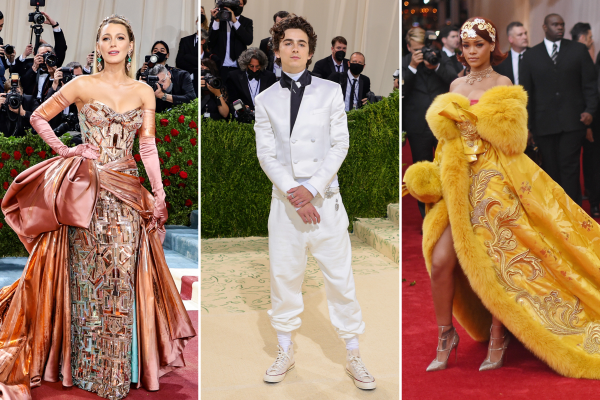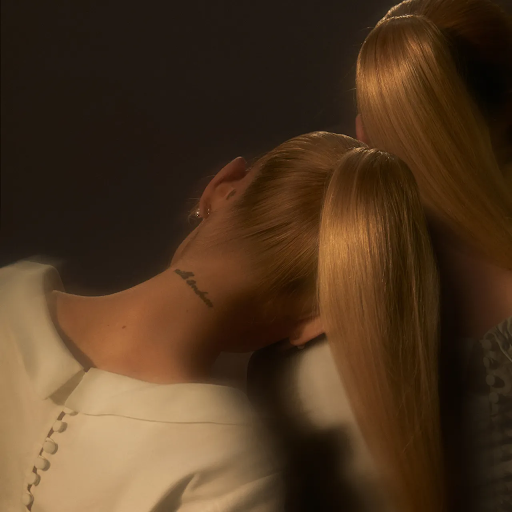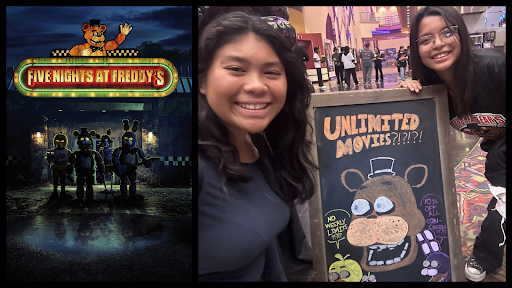Perfect Blue Review
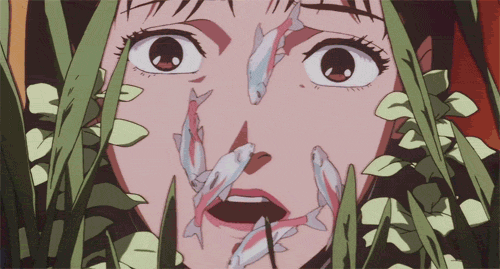
: Photo from: http://popoptiq.com/perfect-blue-review
October 7, 2022
It is hard to come across a movie that manipulates the watcher’s emotions to replicate the feelings of the main character, but Perfect Blue (1998) has gone above and beyond just holding the viewer’s emotions in a chokehold. This film is an emotional rollercoaster and it is not a movie to be skipped over. Its precious, innocent start takes such a wild turn and the majority of the movie is nothing but pure chaos… but it pulls it off so well. Based on a novel published in 1991, Perfect Blue is a psycho-thriller anime film directed by Satoshi Kon, who has also directed an episode of JoJo’s Bizarre Adventure (1987) and several other horror animes. It runs for about 80 minutes, but those 80 minutes are action-packed and not a single second is wasted.
Surface-Level Interpretation
(Spoilers and TW: rape, murder, stalking, poor mental health)
The movie surrounds a 21-year-old J-pop star Mima Kirigoe who decides to put an end to her idol career and pursue acting. She leaves her group “CHAM!” and begins her new life as an actress with the help of her manager Rumi Hidaka and agent Tadokoro. On her train ride home, she sees herself in the reflection as her idol self, which becomes important later on. Once she left, she feeds her pet fish and opens fan-mail that features the word “traitor” several times and a link to a website named “Mima’s Room”—a blog with a diary of Mima’s daily activities, with an unnecessary amount of specificity, such as what foot she steps out of a subway with first. Realizing she now has a stalker, she informs Rumi but the topic was dismissed.
Mima begins acting for a movie called Double Bind, and this is really where it takes a turn for the worse. The screenwriter and her agent, Tadokoro, work together to exploit Mima and get her to participate in a rape scene. Mima agrees with the idea and they get the scene filmed. She seems fine during the drive home with Tadokoro, but the moment she gets home and realizes her pet fish are dead, it sends her into a complete meltdown. She sobs about how she didn’t want to do the scene but wanted to really show she was a worthy actress. This is where a hallucination of Mima as her idol self appears in the room, which becomes a recurring character that constantly shuts down Mima’s dreams of being an actress and claims to be Mima’s “true self.” This correlates with the theme of the fan-mail, which refers to her being a “traitor” to her fans for quitting her singing career.
She is frequently on the blog and stalks her own stalker, who calls himself Me-Mania and reads through the explicitly detailed descriptions of her actions and feelings throughout the day. She gets paranoid but continues on with her life. Me-Mania appears frequently in her peripherals as she shoots Double Bind, but he disappears the moment she notices him. She believes she’s hallucinating.
Things take a very dark turn. Characters begin to get murdered, but not just anyone: people who exploited Mima. The viewers watch as what seems to be Mima murdering the photographer, her images from the photoshoot projecting over the scene as he is brutally attacked. As Mima loses her grip on reality, she watches the news to find the photographer was killed. She goes to her closet to get dressed and finds a bag of bloodied clothes, and she convinces herself she was responsible for the murder.
Me-Mania engages in an online conversation with the “real Mima” via email. They are displeased with Mima’s loss of innocence and decide to try to eliminate her so the “real Mima” can take her place. After the last scenes of Double Bind are shot, Mima begins to leave the set but encounters Me-Mania. He proceeds to attack her and attempts to sexually assault her—coincidentally in the same room the rape scene was filmed. She finds a hammer and manages to hit him hard enough to break free, and stumbles into Rumi. Mima tries to show Rumi the man, but he is gone. It is shown that Me-Mania survived the attack and attempted to kill Tadokoro but in the process, they kill each other.
Mima wakes up in a room that resembles hers before her transition to being an actress: CHAM! posters, her fish alive, and it’s fairly clean. The other Mima appears once again, but in the mirror reflection, a dressed-up Rumi is shown. She is adorned in Mima’s idol clothing and wig, saying she is going to eliminate Mima so the “real Mima” can exist. A fast-paced chase ensues, with the “real Mima” trying to stab her with the same weapon used in the other murders. As this plays out, reflections of the hallucination reveal it to be a struggling Rumi running behind Mima. During one of Rumi’s attempts to stab Mima, she breaks a window.
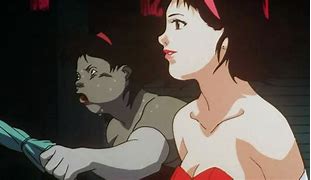
After suffering from a few wounds, Rumi and Mima continue to fight weakly. Mima knocks the weapon out of Rumi’s hand. As she reaches down to grab it, the window’s shards stab her through the stomach. She stumbles back into a nearby street, shown as Mima once again with severe wounds but a simple smile on her face. Mima realizes a truck is about to hit her and pushes her out of the way, but with both severely wounded and weak, they pass out in the street.
Time skip to a few years in the future, Mima arrives at a hospital to visit Rumi. The doctor describes Rumi’s condition, as she was diagnosed with a personality disorder that is in the process of being treated, though she still tends to think she is Mima. As she leaves, nurses gossip about her, saying she’s a lookalike of famous actress Mima Kirigoe considering she would have no reason to be visiting a mental hospital. The final scene shows Mima looking into the rearview mirror of her car saying, “No, I’m real.”
So… Why is this movie so special?
It took me two rounds of viewing this film, plus quite a few theory/explanation videos, to truly understand what is going on in the movie. The first time I watched it, I was just utterly confused as to what just happened and what it meant. Second time around? Mind. Blowing.
There are a few ways to interpret what this movie means. On one hand, it can be inferred that it represents how much media can influence a person, and possibly that the media can change how a person views themselves as a whole. For instance, Me-Mania is an online personality. The actual man is Mamoru Uchida, but his interactions with Rumi through “Mima’s Room” and his obsession basically became his whole personality. His room is covered in posters and pictures he’s taken of Mima at the shows surrounding his computer he talks to Rumi with. He doesn’t even have a real identity anymore. He’s just Me-Mania. Rumi, who ran the website, was indulging in her other personality through it; however, her actual self rarely was shown to have this other personality—at least, not until the end. With the publicity and exploitation Mima inherited through her career change, she grew insecure and self-conscious of the actions she was taking to further her new job. Her past was haunting her. As shown in the last scene, she still has to remind herself that she is real.
On the other hand, the movie can really show the lack of privacy celebrities get. Mima had someone documenting every moment of her life daily. She was constantly surrounded by cameras, whether it be on set or in public. Even better, she had a stalker following her everywhere she went. As the watcher, seeing Me-Mania pop up in the background repeatedly sets in that nerve-wracking paranoia she must’ve been feeling. Her image was everywhere: newspapers, television, the news, and websites. She was never alone.
Symbolism is strong throughout Perfect Blue as well. During the murder scene of the photographer, a projector casts the images of Mima onto the murderer’s face as she stabs him. With Mima’s face cast over Rumi’s, it represents what is happening in her head. She is Mima—or at least, that’s what she thinks. She puts herself into Mima’s shoes and takes care of the situation for her, but all the while projecting her own emotions and labeling them as Mima’s. In the murder scene, that is what’s happening in a more literal sense: she is once again projecting her feelings about Mima’s career change onto others, but with her personality disorder, she is convinced this is how Mima feels.
This applies to the scenes with the “real Mima” talking down to the protagonist. The “real Mima” is just a projection, a visual representation of what’s truly going on inside. However, it isn’t just how Rumi feels. It is evident this is similar to how Mima feels. Her breakdowns, her psychosis, her hallucinations—Mima clearly shares this feeling of being used and exploited by agencies, directors, and photographers. This lingering idol Mima appears throughout the beginning of the movie as simply a reflection; perhaps, a reflection of the past. She is reminiscing, nostalgic, and possibly anxious about her transition. It is her inner consciousness visualized. Once this consciousness comes to life—appearing in Mima’s room, during the podcast with the other CHAM! members, even chasing her outside—it can be assumed this is Rumi. As her manager, Rumi controlled many aspects of Mima’s life and had easy access to Mima’s plans, house, past, and future. Not to mention the psychological impact everything had on Mima’s mental stability, it is understandable why this personality of Rumi was such a spitting image of Mima.
Following the idea of Mima losing herself, lighting becomes a signal of her struggling to differentiate fiction from reality, her career from her personal life, her roles, and her actual self—all around her identity. During her photoshoot, there are flashes every time the man took a photo of her, up until the final flash that follows an image of a murder scene. During the rape scene, there’s a quick sequence of flashing and quick clips of the male actors. That same scene flashes with the cheering of the men and cheering of crowds at her concerts. During the Rumi vs. Mima scene, the bright lights of the truck head straight towards Rumi. Instead of fleeing, she stands as if she’s exiting a show. Lights encompass the main topic of the film: detachment, both from reality and from a sense of self.
The very last scene of Mima in her car is practically littered with symbolism. As mentioned before, her final line represents the major impact this transition had on her mental health, which is also quite ironic considering she’s only visiting a mental institution rather than getting the help she needs. It may also be noted that this idea of lights meaning mental struggles is behind her. In the mirror, right in the very back of her car, that white light is shown once again. Yet, through her windshield, all to see is blue skies. This can be interpreted as the messy, identity-crisis-past behind her, and there is a better future for her.
Perfect Blue is a beautiful movie, and not just visually. The meanings are so unique. These topics are rarely discussed, especially the concept of famous people lacking privacy. It’s different, it’s moving, and it’s a fun watch. As an analytical person, this movie is particularly enjoyable due to it being filled to the brim with symbolism that can be interpreted in a plethora of ways. The overall meaning, as well, is up to the viewer to interpret.
Perfect Blue can be found on Prime Video and Apple TV:
Amazon Prime: https://www.amazon.com/Perfect-Blue-Junko-Iwao/dp/B07NNP4R4H
Apple TV: https://tv.apple.com/us/movie/perfect-blue/umc.cmc.32vyvgm93ui4f12azahnlvip1
There are several explanations and reaction videos on YouTube that go into intense detail about what happens in the movie. Here are a few I enjoyed:
Why Perfect Blue is Terrifying – YouTube
Why Perfect Blue Broke Me – YouTube
What I Believe Happened in Perfect Blue – Updated Version – YouTube
Article I found helpful: PERFECT BLUE | The Definitive Explanation – Colossus (filmcolossus.com)

